Raghurajpur – Grassroot Immersion while Living Like a Local
Raghurajpur was an unexpected countryside retreat, a perfect place to slow down, reconnect and heal from the scars the pandemic unabashedly gave to the world. My humble abode was surrounded by coconut trees that swayed to the music of the wind. The pond next to the cottage was my place of comfort as I spent time unwinding my thoughts. The wildflowers danced to the symphony of the gentle breeze. The kitchen garden bloomed with spinach, cabbage, beans, brinjal and so many other vegetables.
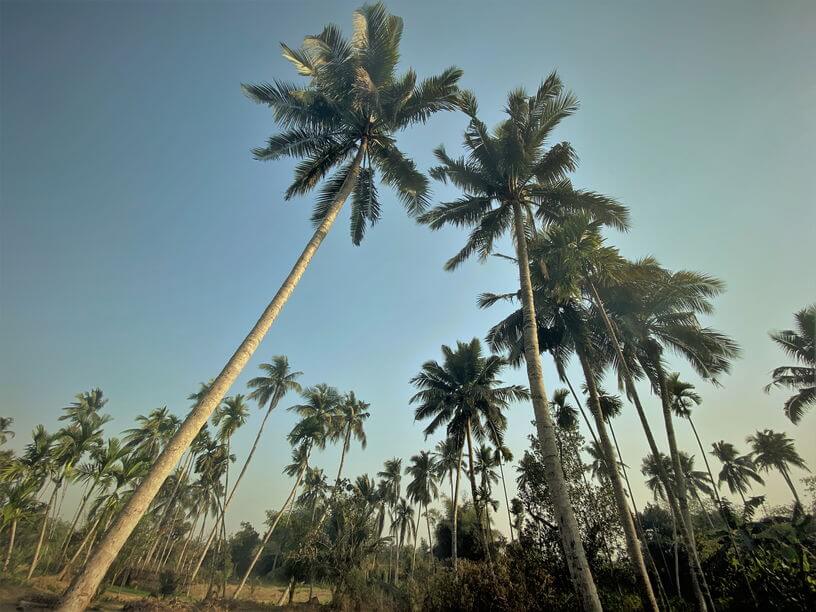
I often imagined living a life like this, to be at a place where I speak to my solitude. In the silence of the moonlit night, away from the crowd, the stars sprinkled across the sky to give me company. The silhouette of the trees at night was oddly comforting. I stayed in a humble cottage at Raghurajpur for nearly 10 days- so grateful to Mr. Ajit Swain – Founder of Dedicated to People NGO for hosting me and making me feel at home, treating me as family.
PIN THE POST TO READ LATER
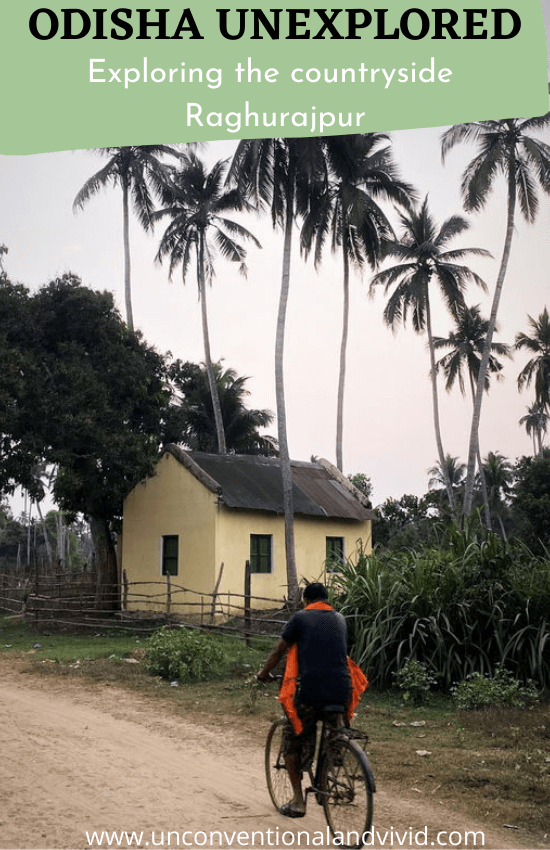
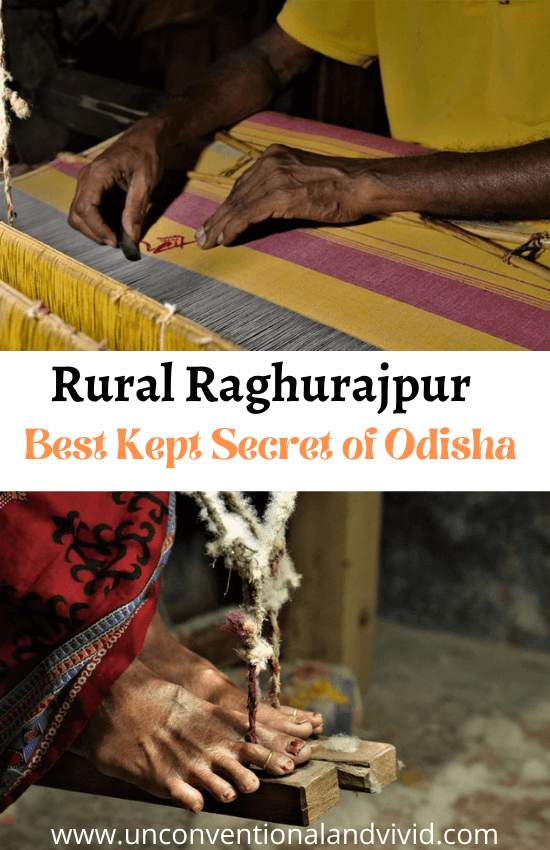
Table of Contents
A Countryside Sojourn – Home away from Home
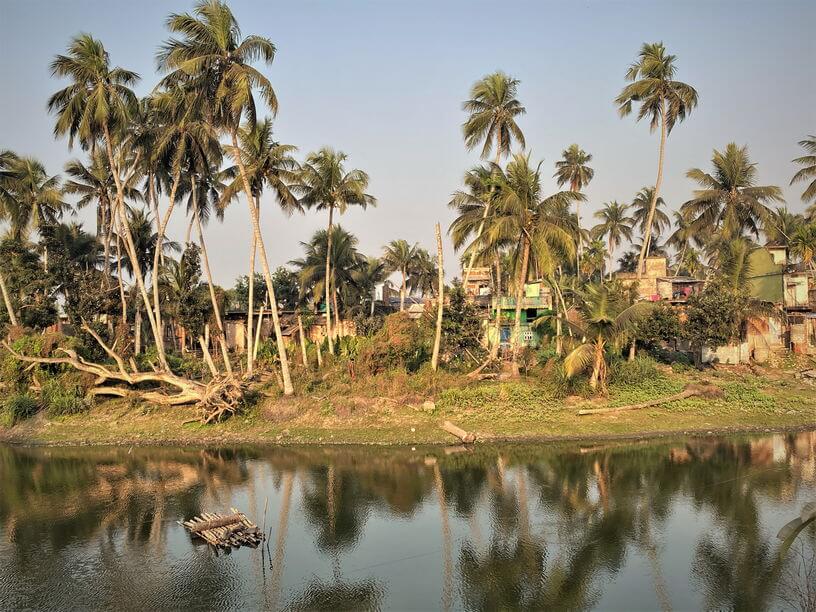
Odisha was on my travel list for a long time. The countryside abode at Raghurajpur village was the ideal bucolic immersion, much needed after the concrete jungle confinement. Every morning I would wake up and open the rustic wooden window for the morning rays to seep through. Tiny birds and butterflies were my regular visitors as I would lazily sit by the window with my laptop, sipping coffee or tea.
Most days I would take a stroll admiring the trees, dusty roads, and walking through the narrow lanes of the village. The houses in the village were mostly constructed in an elongated style, mostly three rooms one after another. The houses were packed together adjacent to each other, with vibrant colors and remarkable paintings on the walls. On a regular day, you will find artisans soaked in their work with finest execution of their craftsmanship.
Read about Niyamgiri Hills and The Dongaria Kondha Tribe
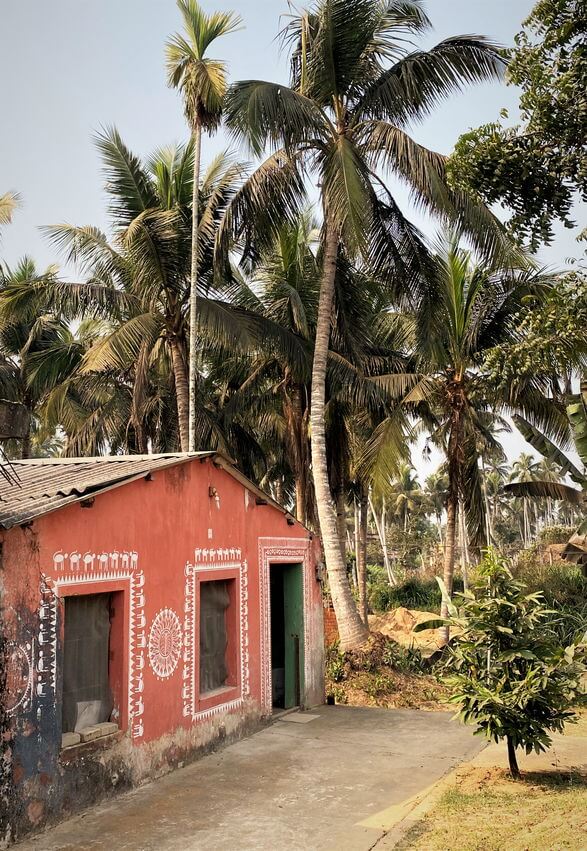
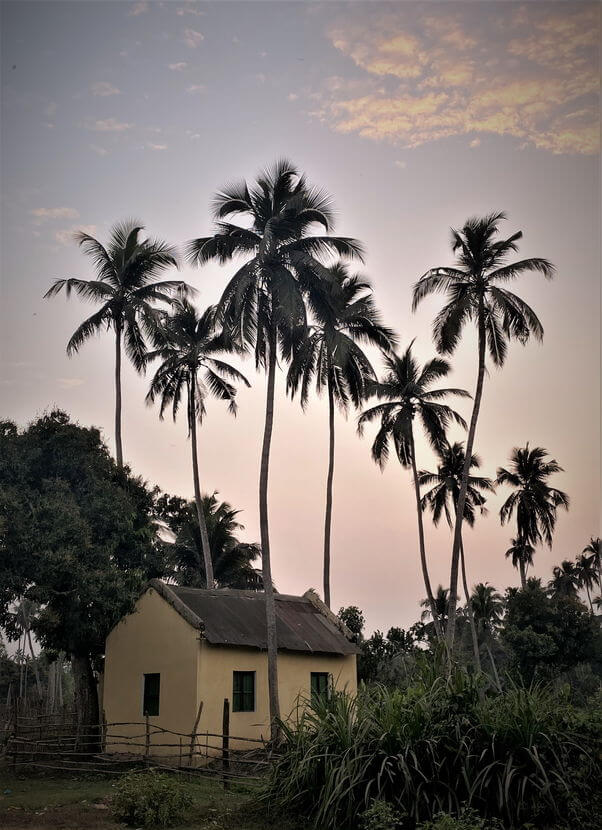
Raghurajpur through the eyes of Local NGO Dedicated to People
I carried a blank canvas inside my head, waiting to fill it with experience from Raghurajpur, living like a local. The village has reached global fame promoted as Heritage village but the experiencing the grassroot stories was far more promising. The arts and crafts and artisans skillfully working on their art on their verandah is just the tip of iceberg. Beyond the single lane of Raghurajpur, the artisans experience only blurred recognition for their work.
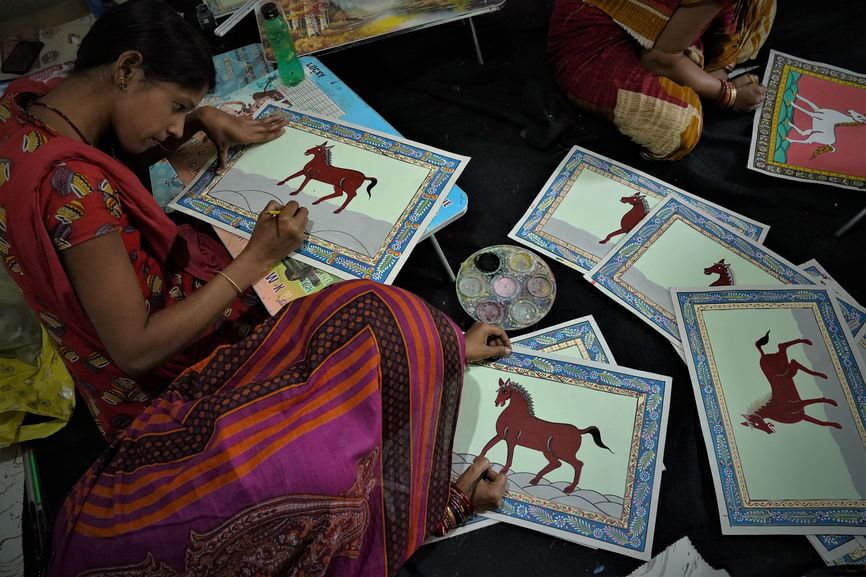
Bridging the Gap Between Unemployment and Skill Development
Education has taken a back seat in the remote villages of Odisha. At a tender age of 18, most girls step into nuptial ties and are packed off to their matrimonial homes. The scope of employment in government sector or a private organization is a far fetched dream. A lot of women earn their livelihood by making paintings and selling off to middle men or customers.
Learning the traditional art forms like Pattachitra and Palm Leaf painting has helped women from village earn their livelihood. During my stay at Raghurajpur, Ajit Ji took me to a training center in Nua Balia village. The center trains nearly 30 girls and woman from nearby villages. Under the guidance and supervision of two masters, they are taught Pattachitra from scratch. A yearly schedule in prepared in advance with focus on perfecting different painting forms every month – starting from animal to human forms.
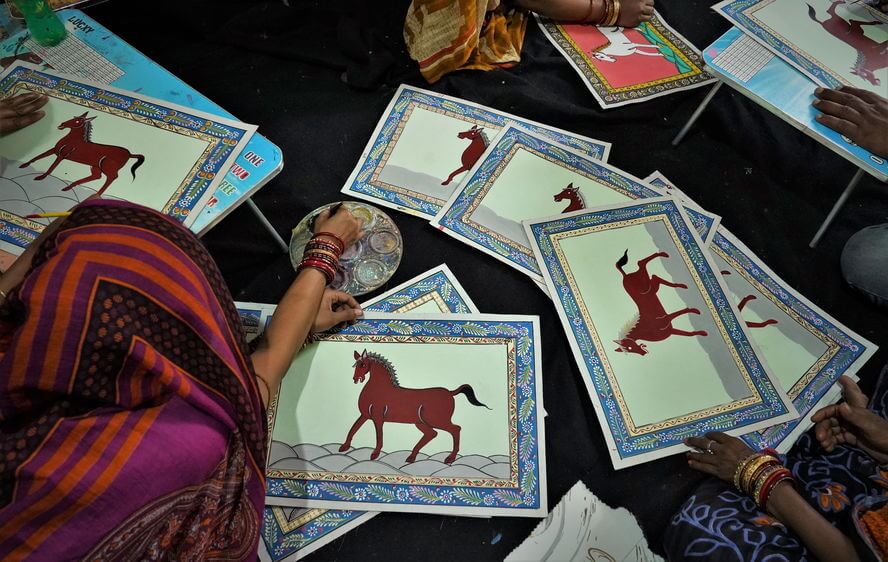
Dedicated to People as an NGO has helped in bridging the gap between government and villages. Mr. Ajit Swain, as founder has helped many villages start skill development and training centers by bringing government aid. The trainees are paid Rs 1000/- per month as stipend and the masters are paid Rs 15000/- per month. Once the training is over, women interested in art and earning livelihood are given employment opportunities by the NGO. As I entered the training center, most women were shy to speak and smiled at me coyly. But they intensely stroked their brush across the horse painting – the scheduled animal painting for the month.
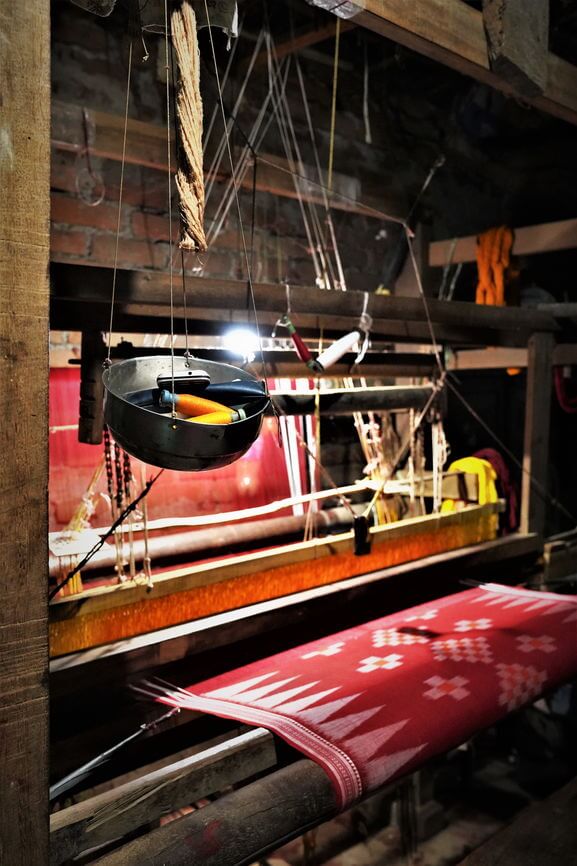
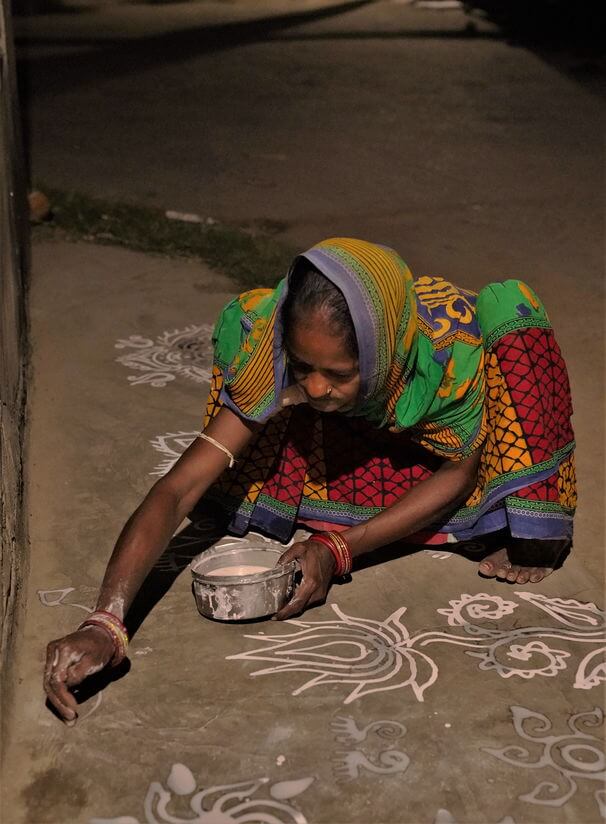
Visiting Local Weaving Village in Chandanpur
Another remote village called Aalandia has families of weavers working on the loom generation after generation. Odisha is known for its characteristics weave patterns and each village has their own weaving specialty. It was almost dusk when I reached the village. Ajit ji and I were welcome inside the humble house of one of the weavers. I saw a woman drawing Rangoli using rice flour and water mix on the verandah floor, preparation for early morning worship next day.
I carefully jumped past the verandah, trying not to ruin the designs. The man, stout and nearly in his 60s, showed his loom and the work they do. On talking to him, I found out that the village is mostly in weaving traditional styled towels. Tiny houses lined on both sides of the narrow lane; each household had their own looms. The skill of weaving has been passed down to the next generation since a long time. The villagers sell their weaved products either in the market or to businesses, generating livelihood for their families.
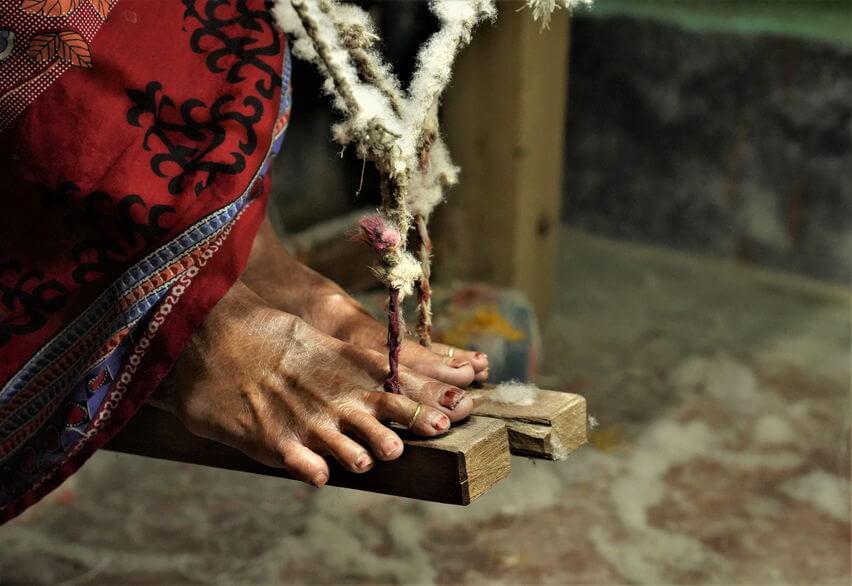
Existence of Disparity in the Village
As much as I loved my countryside rural stay, but the existence of disparity even at village level was visible. Most artisans are not aware of the real value of the piece of art they create. Even in the 100m lane of Raghurajpur, if you look closely, you will see disparity. The first few houses make most of the money from selling their art to the visitors. Marketing skills plays a major role in luring customers. As you walk along the, the last few houses merely earn a pittance despite having the skills.
In Raghurajpur, the artisans have converted the first room of their house as shop. Most of the artisans, although they say all products are made by them, procure large quantity of products from neighboring, less popular village at cheaper price. I met a girl who could make beautiful palm leaf engraved painting (Taal Patta), but lacks basic marketing skills to sell her art. For a meagre amount, she sells off palm leaf painting to bigger shops.
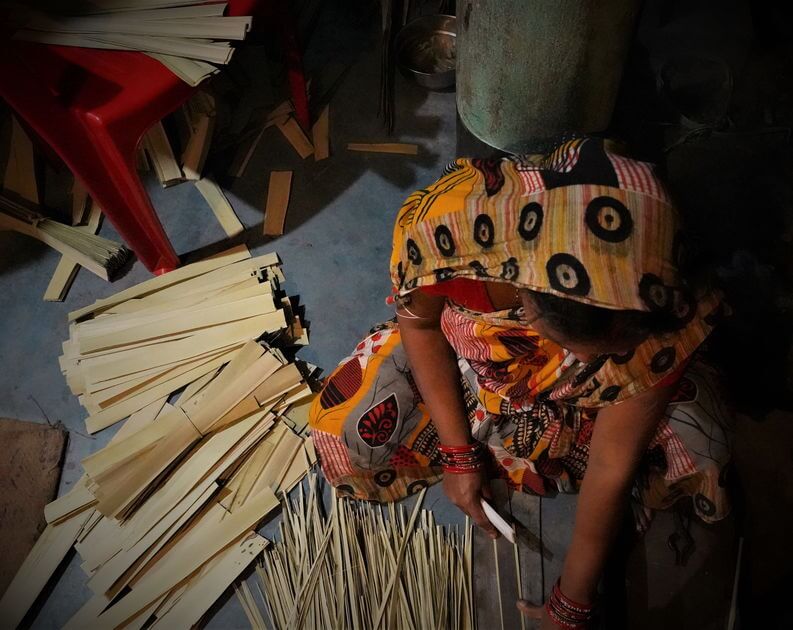
Large board hang outside house of few artisans with picture of the artisan receiving award from President or other honorary figures. The outstanding art earned its accolade in time but lack of proper channelization for work laid dust on the boards. The old hands of once National award Winner are left at mercy of occasional visitors or third party buyers, with limited art creation. It is a pity that government has turned a blind eye on the aging artisans, despite national awards and recognition.
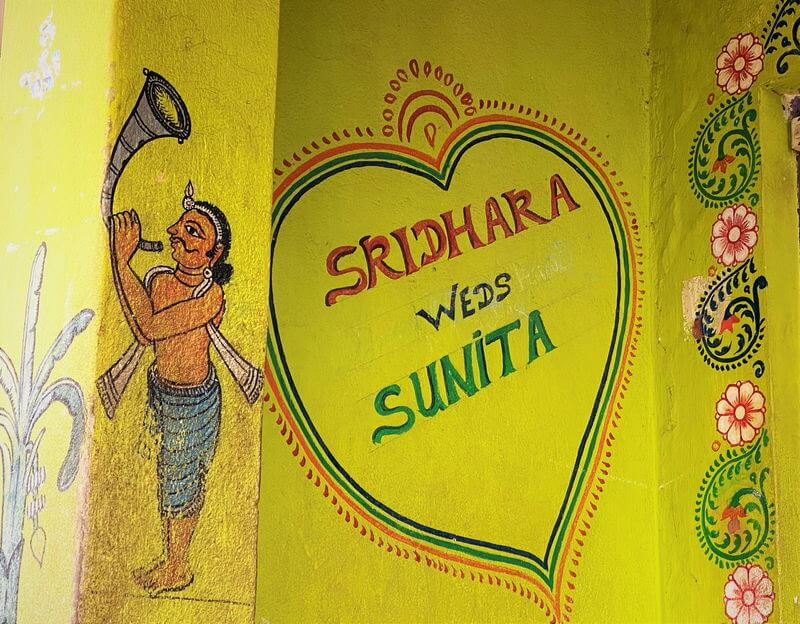
Interesting Customs and Traditions
As I wandered around the dusty streets of Raghurajpur and nearby Chandrapur area, I noticed few things followed as part of ritual and custom.
- Every village has a welcome gate marking the start of the village and welcoming people. The community bathing pond is a common sight in every village. While most house have running tap water, a lot of people still continue to bathe in the pond or depend on it for water.
- Most houses are brightly and vividly colored with paintings on it. One striking similarity existed between all houses. . Every house welcomes the newlyweds freshly painted on the façade walls. A heart bubble encloses “X weds Y” painted on the walls to celebrate the nuptial ties.
- Every Tuesday morning calls for customary worship for well-being and prosperity of the family and village at crack of dawn. The woman are often seen creating rice fluor Rangoli on Monday night to prepare for the ceremony and prayers.
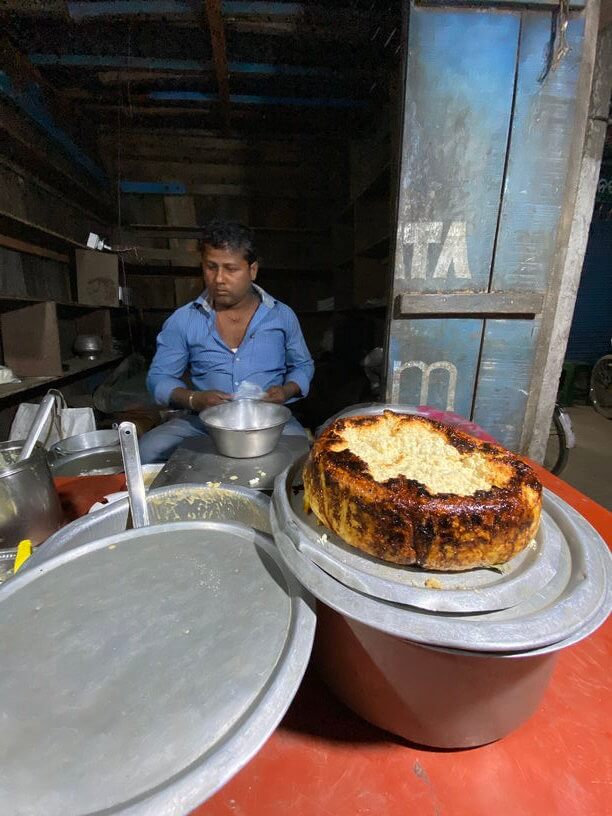
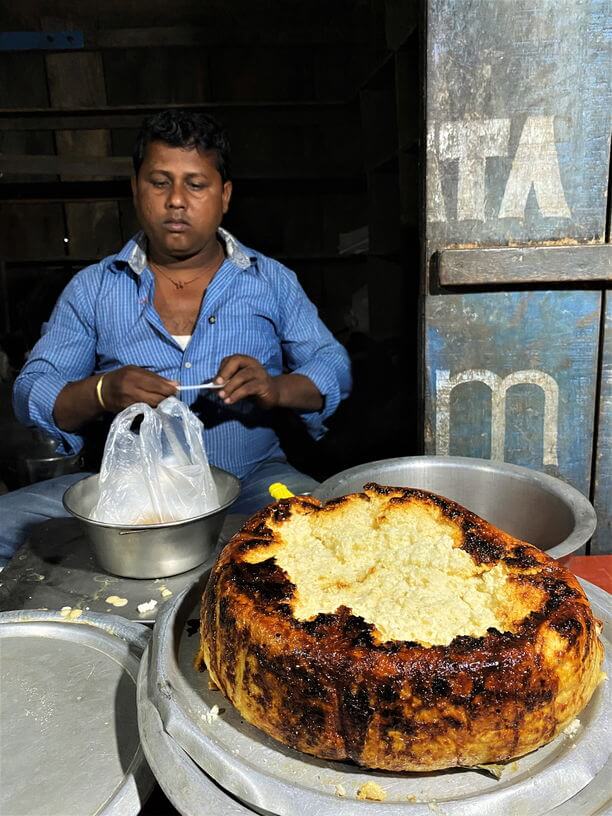
Dose of Cheese and Milk Sweets from Local Mithai Wala
The taste of the soft Chenna Poda (authentic cheese desert of Odisha) still lingers in my mouth. The freshly prepared cheese desert was a sinful experience, so melted in the mouth. Every evening I had my share of calories as I visited the local of sweet shop. It was a small shop that sold sweets made of milk like Chenna Poda, Rabri, Rasgulla etc. The shop opened at around 6.00pm every evening with freshly prepared sweets. Locals and people from adjacent village circled the shop to get a mouthful of the sweets and pack some home. If you are Raghurajpur, do not miss trying the sweets from this local Mithai Wala. He sits close to the railway line.
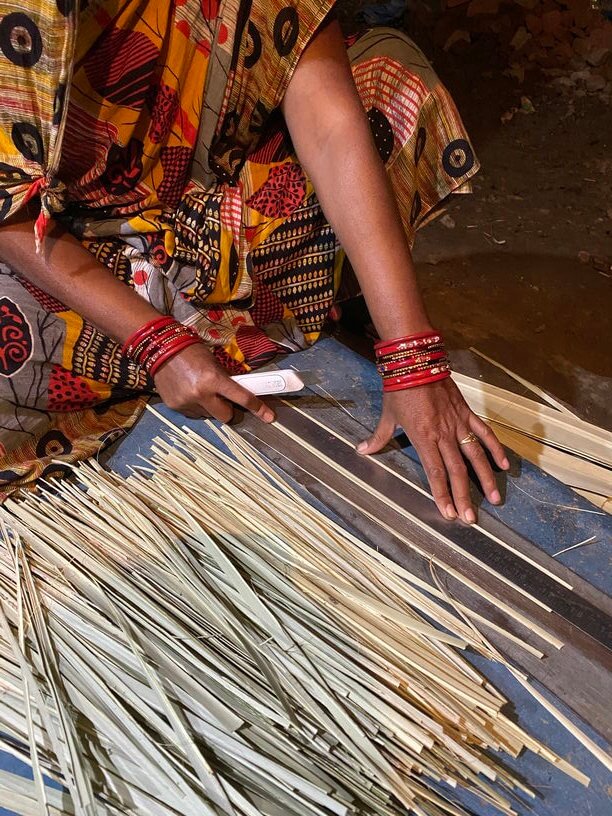
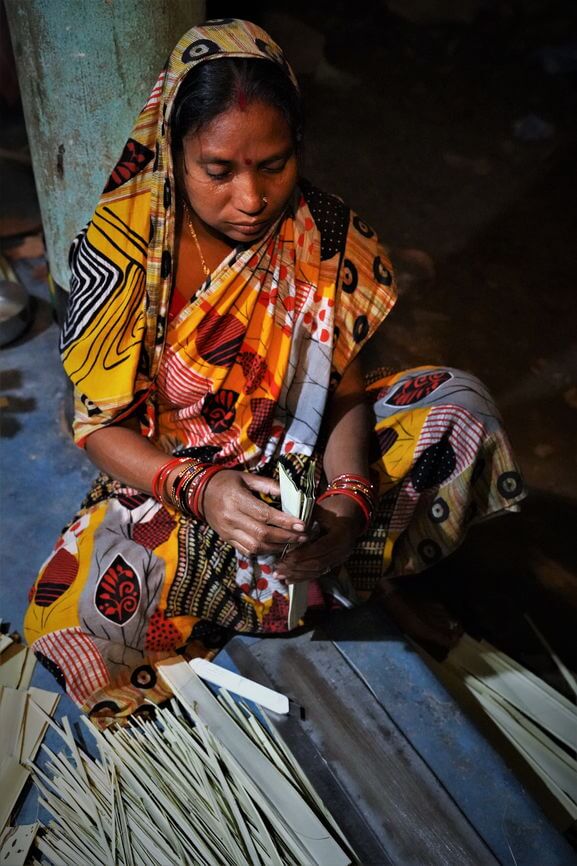
Division of Labor for Creating the Perfect Art
Most of the artisans of bigger shops in Raghurajpur or elsewhere say everything is handmade by them from scratch. However, it is not true because it is the division of labor that helps in creating the art pieces. A certain community cuts down the palm leaves at the right time. Another set of people cut the palm leaves into appropriately and stitch it together to create a blank palm leave canvas. The artisans purchase the stitched palm leaves for engraving and creating the palm leaf painting (Taal Patta). Not all the paintings are done by the same artisans. Most purchase in bulk from poor artisans from remote villages and sell at higher price.
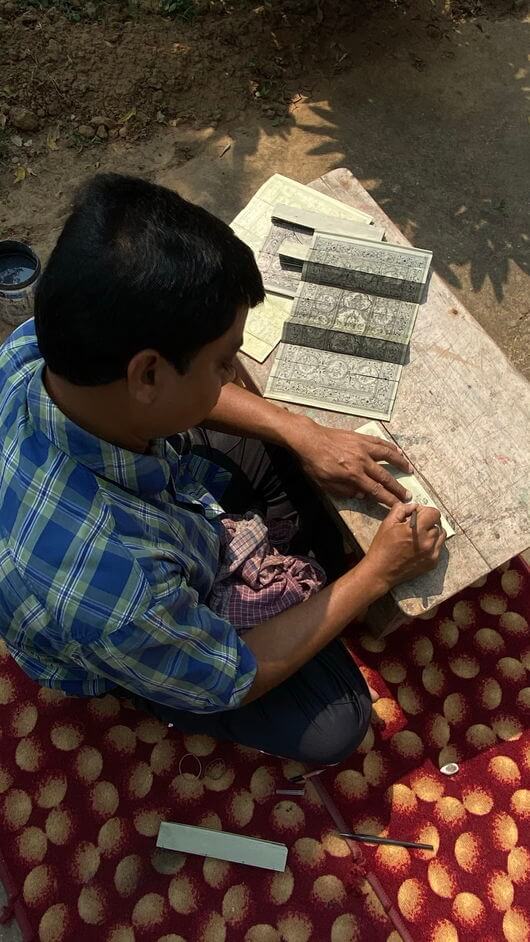
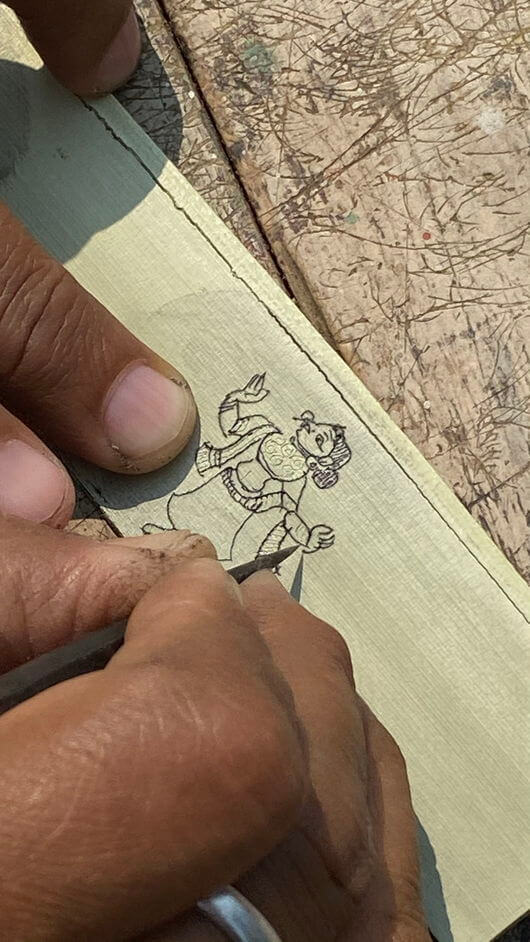
Bridging the Gap Between Artisans and Buyers
The artisans have excellent craftsmanship but lack the basic marketing skills. With artisans inheriting the heritage art from their ancestors, they undervalue the worth of their piece of art. Most people do not have proper channel to sell their art at genuine price. Mr. Ajit Swain, quit his job in Delhi, moved back to Odisha, and started Dedicated to People to help artisans and promote their work. His NGO promotes and funds various artisans and connect them to art loving customers across the globe. During pandemic, he helped the poor artisan families with food, funds, and supported their survival.
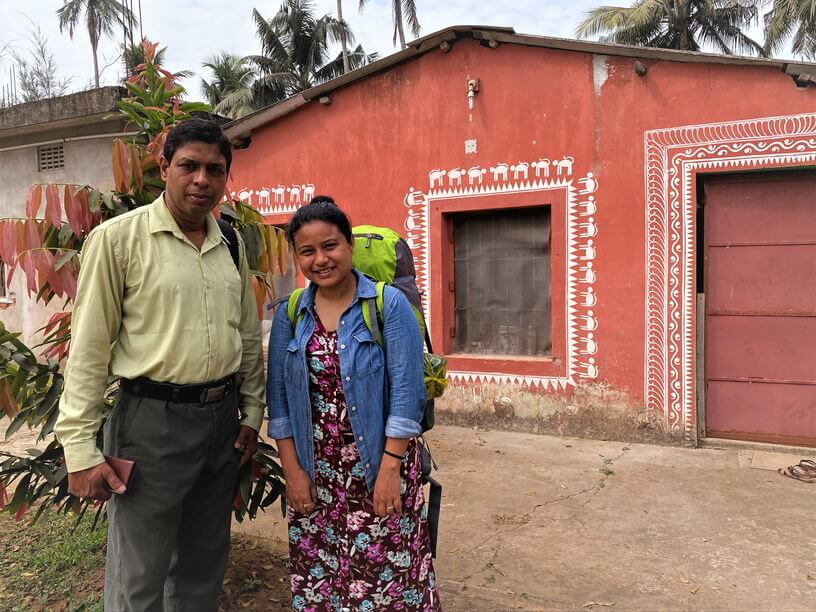
Living like a local in Raghurajpur gave me an immersive grassroot experience. Beyond the label of heritage village, there is another world that unfolds through a pure rustic journey. Be it the bustling market of Chandanpur or the solitary starry nights, the village is so much more that the single land of art and heritage.
PIN THE POST TO READ THE POST LATER
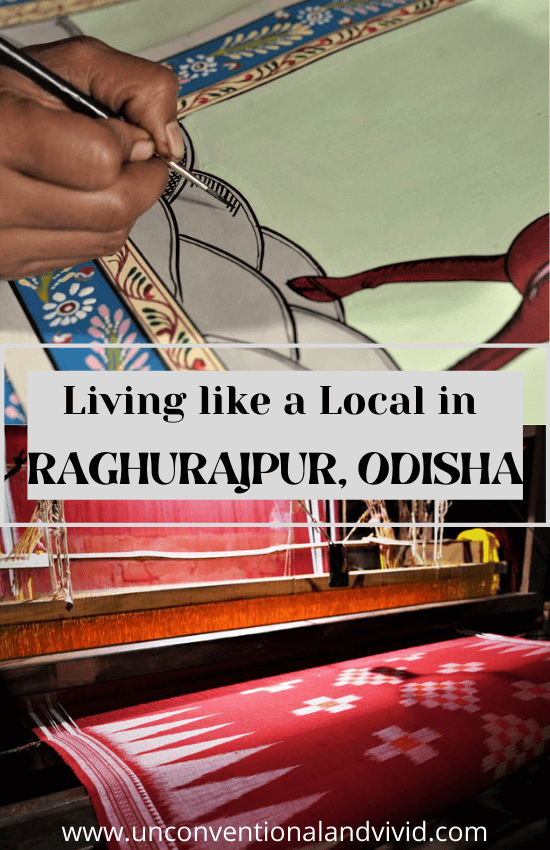

Disclaimer: My trip to Raghurajpur was in collaboration with Dedicated to People NGO. I am grateful to Mr. Ajit Swain for his time and his warm hospitality. This trip and grassroot experience would not be possible without his guidance and help. However, all the opinions like always are mine and based on my experience.

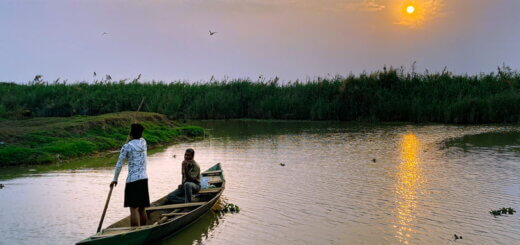
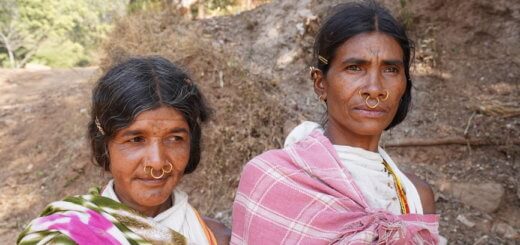

Beautiful post about the art village
Thank you so much!! Please do share so that other can also connect and read. Take care 🙂
Beautiful post. I have also been to Raghurajpur, and I have to agree that it’s a vivid village. There’s so much to marvel at! Unfortunately, I got to spend barely a few hours at the village. I hope to visit it on a longer trip sometime in the future.
Thank you so much!! Indeed, Raghurajpur has so much to offer and it is so much beyond heritage and that one single lane. I hope you make it again to Raghurajpur to explore better once pandemic is over. Stay Safe!!